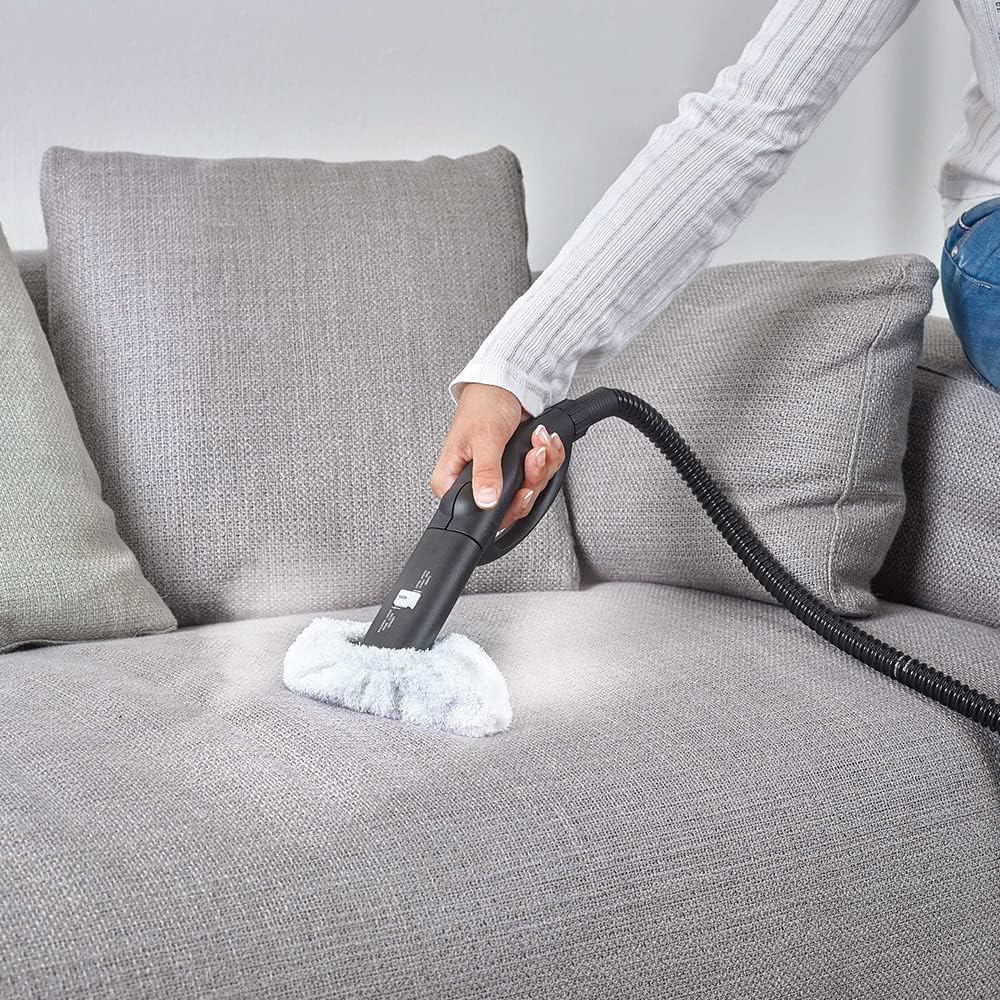Why Upholstery Cleaning Is Essential
Improved Air Quality
Over time, dust, dirt, and allergens accumulate in upholstery, impacting indoor air quality. Regular upholstery cleaning ensures that these particles are removed, reducing the risk of respiratory issues and allergies.
Prolongs Furniture Lifespan
Furniture is a significant investment, and regular cleaning helps prevent wear and tear. Dirt can act as an abrasive, leading to premature aging of fabric. Professional upholstery cleaning ensures your furniture lasts for years.
Top Methods for Upholstery Cleaning
- Vacuuming
The first step in effective upholstery cleaning is vacuuming. This removes surface dust, hair, and crumbs, preventing them from embedding deeper into the fabric.
How to Vacuum Upholstery Effectively:
- Use a soft brush attachment to avoid damaging delicate fabrics.
- Focus on crevices and under cushions.
- Vacuum regularly, ideally once a week.
- Steam Cleaning
Steam cleaning is a highly effective method for deep-cleaning upholstery. It uses hot water vapor to dissolve stains and kill bacteria.
Benefits of Steam Cleaning:
- Removes tough stains and odors.
- Sanitizes the surface by killing germs and bacteria.
- Eco-friendly, as it requires no harsh chemicals.
- Dry Cleaning
Dry cleaning involves using specialized solvents to clean delicate fabrics without water. This method is ideal for materials prone to shrinking or warping.
When to Opt for Dry Cleaning:
- For vintage or delicate fabrics.
- When dealing with water-sensitive materials like velvet.
- Spot Cleaning
Accidents happen, and spot cleaning tackles spills and stains immediately. Use a clean cloth and an appropriate cleaner to blot the affected area.
Tips for Effective Spot Cleaning:
- Blot, don’t rub, to avoid spreading the stain.
- Test the cleaner on a hidden spot to ensure it doesn’t damage the fabric.
- Use a solution of mild detergent and water for most fabrics.
DIY vs. Professional Upholstery Cleaning
DIY Cleaning
Many homeowners prefer DIY cleaning due to its cost-effectiveness. With the right tools and knowledge, DIY can be effective for maintaining cleanliness.
Pros of DIY Cleaning:
- Cost-saving for regular maintenance.
- Flexible scheduling.
- Access to eco-friendly products.
Cons of DIY Cleaning:
- Limited effectiveness for deep stains.
- Risk of damaging fabrics without proper knowledge.
Professional Cleaning
Hiring experts ensures a thorough and safe cleaning process. Professionals use advanced equipment and tailored cleaning solutions for each fabric type.
Advantages of Professional Upholstery Cleaning:
- Expertise in handling all fabric types.
- High-grade equipment for deep cleaning.
- Guarantees removal of tough stains and allergens.
Common Upholstery Cleaning Mistakes to Avoid
- Using the Wrong Cleaning Products Always check the manufacturer’s instructions for recommended cleaning agents. Using the wrong product can cause discoloration or damage.
- Over-Wetting the Fabric Excess moisture can lead to mold growth and fabric damage. Use minimal water and ensure proper drying.
- Ignoring Regular Maintenance Waiting too long between cleanings allows dirt and stains to settle, making them harder to remove.
How Often Should Upholstery Be Cleaned?
Weekly Maintenance
- Vacuum weekly to remove surface dirt and dust.
- Address spills immediately with spot cleaning.
Monthly Deep Cleaning
- Use steam or dry cleaning methods for a more thorough cleanse.
Annual Professional Cleaning
- Schedule a professional upholstery cleaning at least once a year for optimal hygiene and longevity.
Best Products for Upholstery Cleaning
- Upholstery Shampoos
Designed for fabric-safe cleaning, these shampoos are excellent for removing stains and odors.
- Fabric Protectors
Applying a fabric protector creates a barrier that repels stains and dirt, making maintenance easier.
- Eco-Friendly Cleaners
Opt for biodegradable and chemical-free cleaners to ensure safety for your family and the environment.
Health Benefits of Upholstery Cleaning
Clean upholstery contributes to a healthier home by removing allergens, bacteria, and dust mites. This is particularly important for households with children, pets, or allergy sufferers.
Key Benefits:
- Reduces allergy symptoms.
- Minimizes the risk of skin irritation.
- Promotes overall well-being.
Conclusion
Regular upholstery cleaning is vital for maintaining the beauty, hygiene, and lifespan of your furniture. Whether you choose DIY methods or professional services, understanding the best practices ensures your upholstery stays in top condition. Implement these cleaning strategies to create a healthier and more inviting home environment.
